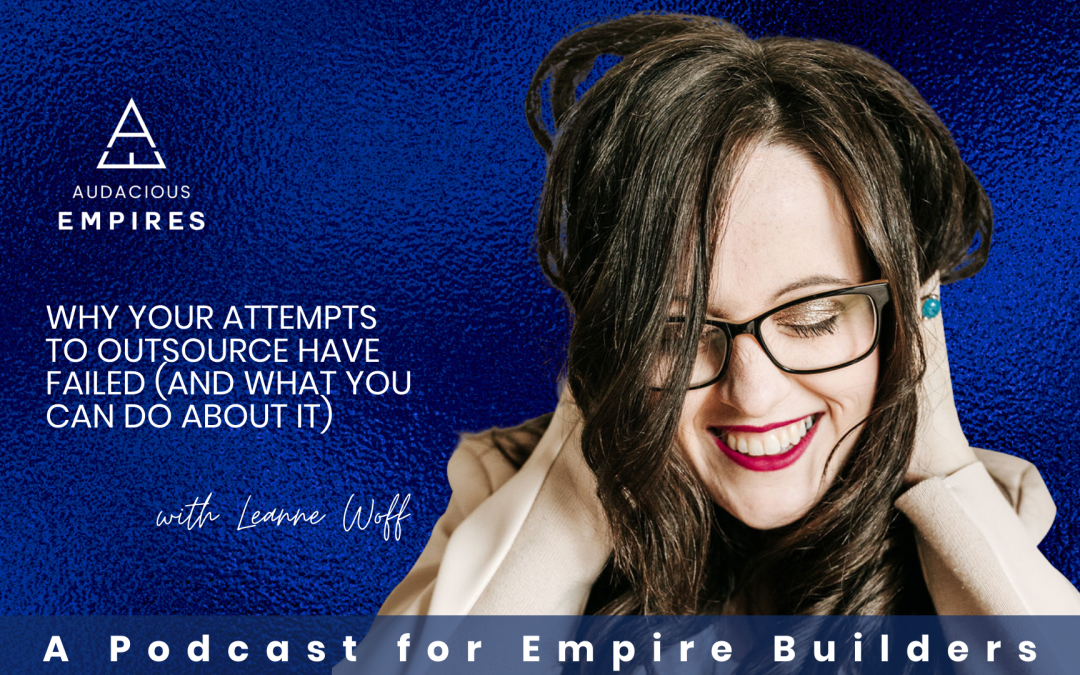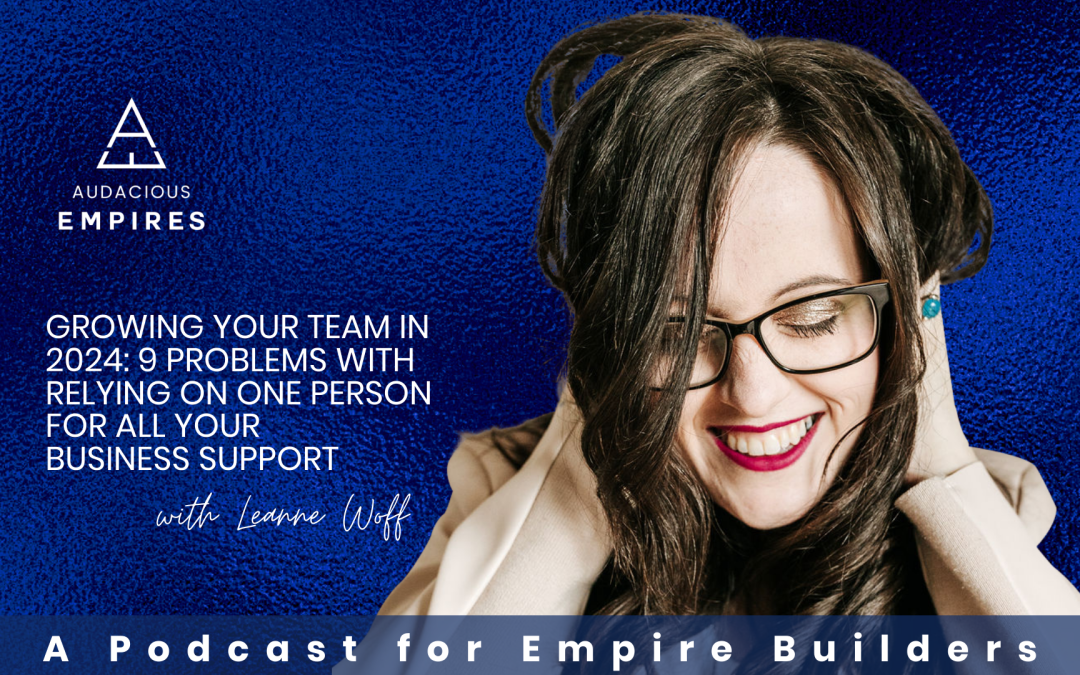
My launch is failing, now what?
The Importance of Launch Systems
In the fast-paced world of online business, launching a new product, service, or course can be both exhilarating and daunting. You’ve poured your heart and soul into creating something truly remarkable, but what happens when your launch doesn’t go as planned?
As an empire builder, you understand the importance of proactively removing bottlenecks and systemising operations to scale your impact.
However, a failing launch can feel like a roadblock, leaving you questioning your strategies and doubting your abilities. Fear not, for in this comprehensive guide, we’ll explore practical strategies to overcome launch failures and position you for long-term success.
With a wealth of experience in launch management, Leanne Woff addresses common concerns, such as low sales, ineffective ads, and lack of engagement, providing actionable strategies to troubleshoot and optimise launch efforts. Whether you’re a seasoned entrepreneur or just starting out, this episode is a must-listen for anyone looking to navigate the complexities of online launches with confidence and success.
What this post covers:
• If your launch isn’t working midway, don’t try to fix it, focus on learning for the next launch.
• Define what success and failure look like based on realistic goals, not comparisons.
• Consider the number of launches you’ve done – results can vary based on launch experience.
• Understand that buyer behaviour and the market can change, impacting launch results.
• Assess who is running your ads, what the objective is, and if expectations are realistic.
• Ads are not a silver bullet – they need to work within your entire marketing funnel.
• If people aren’t showing up, re-evaluate how you’re promoting events, not just the format.
• If there are no sales, revisit your messaging and offer to resonate better with your audience.
• Systemise your launch process to reduce stress and overwhelm.
• Get help if launches feel chaotic and last-minute.
Listen now:
Redefining Failure and Success
Before diving into solutions, it’s crucial to reframe our understanding of failure and success in the context of online launches. Often, we base our perceptions on unrealistic comparisons or arbitrary metrics that may not align with our unique goals and circumstances. When you find yourself caught in the trap of feeling like a failure, take a step back and ask yourself: Who defined what constitutes success or failure for this launch? Is it based on realistic, measurable goals or influenced by external factors beyond your control?
“If you’re in the middle of a launch right now and you feel like it’s failing and scrambling to try and work out what you need to do, stop. It’s too late. If you’re in the middle of a launch and it’s not working, It does not matter what you do at this point. There is no rabbit you can pull out of your hat that is going to magically fix it.”
Understand the Launch Cycle
It’s essential to recognise that launch results can vary significantly based on your experience and the current market landscape. Your first launch may yield impressive results as you capitalise on low-hanging fruit, but subsequent launches may require reaching higher and adapting to evolving buyer behaviour. Embrace this natural cycle and resist the temptation to compare apples to oranges. Instead, focus on continuous improvement and adapting your strategies to align with the ever-changing market dynamics.
Evaluating Advertising Strategies
Advertising, particularly through platforms like Facebook and Google, can be a powerful tool in your launch arsenal. However, it’s crucial to approach advertising with a clear understanding of its purpose and limitations. Assess who is managing your ad campaigns, what the specific objectives are, and whether your expectations align with realistic outcomes.
“Ads need the full journey like any other marketing thing needs. The same as email secrets. Sequences. The same as social media. There’s that whole funnel that your ads will help lift and need to be involved in to get results.”
Ads are not a silver bullet; they must work in tandem with your entire marketing funnel, nurturing prospects through the awareness, consideration, and decision stages.
Engaging Your Audience
If your launch events or communications fail to resonate with your audience, it’s time to re-evaluate your approach. Instead of fixating on the format or channel, take a step back and analyse how you’re promoting and communicating about these events.
Are you effectively capturing their attention and articulating the value proposition? Consider leveraging personalised outreach, such as direct messages or targeted emails, to cut through the noise and establish a genuine connection.
Optimising Messaging and Offers
In the absence of sales, the culprit often lies within your messaging or offer itself. Conduct audience research, seek feedback, and test different messaging approaches to ensure your language resonates with your target market.
“Are we pulling the right language and are we really communicating what this transformation is? Is the message right for the audience? And what is making up our offer? Maybe our offer and the way it’s all pulled together and how we’re selling our thing is the issue.”
“Maybe we don’t have the right ingredients. Maybe we need to add something in or take something out. If you’re not getting sales, ask your audience. What would you love for this to work with? Do some messaging testing.”
Additionally, re-evaluate the components of your offer – is it truly addressing their pain points and delivering transformative value? Don’t be afraid to make adjustments or seek outside perspectives to refine your offering.
Systemising for Seamless Launches
Launches are inherently high-stakes and emotionally charged endeavours. Without a systematised approach, the stress and overwhelm can quickly escalate, hindering your ability to execute effectively.
“Systemised launching works so much better because emotions are high and launches their high capacity Jobs. There’s so much going on that we need to be across and so many things that happen at the same time that we need to be able to navigate and so many things that we need to prepare.”
Invest time in developing a comprehensive launch system that streamlines processes, assigns clear responsibilities, and enables you to navigate the complexities with confidence. This proactive approach not only reduces chaos but also positions you for consistent, replicable success.
“Caveat, I originally created this just to be a masterclass. And then a template. And then, as I kept going, I realised that there’s no one template that’s going to fix it. It’s this suite of tools that you need, and the way that you operate it, that you need to make launching easy.”
Seeking External Support
As an empire builder, you understand the value of surrounding yourself with a talented team. If launches consistently feel chaotic and last-minute, consider enlisting the expertise of professionals who specialise in launch management or online business operations. Their fresh perspectives and proven systems can alleviate the burden, allowing you to focus on your visionary role while ensuring seamless execution.
The Bottom Line:
Overcoming a failing launch is not about quick fixes or magic bullets; it’s about adopting a strategic, long-term mindset and continuously refining your approach. By redefining success, understanding the launch cycle, optimising advertising and messaging, systemising processes, and seeking external support when needed, you’ll be equipped to navigate the complexities of online launches with confidence and resilience.
Remember, every launch is an opportunity to learn, adapt, and grow, embrace the lessons, celebrate the wins (no matter how small), and stay committed to your vision of creating a distinguishable, multi-million-dollar brand that positively impacts lives.
If this blog post resonated with you or you’re seeking more insights into mastering the art of online launches, we encourage you to listen to the full podcast episode above. Our host’s wealth of experience and practical strategies will undoubtedly inspire and empower you to overcome obstacles and achieve remarkable success in your next launch and beyond.
Over to you
What has been your biggest struggle or learning experience with online launches so far? We’d love to hear your story and insights in the comments below.





